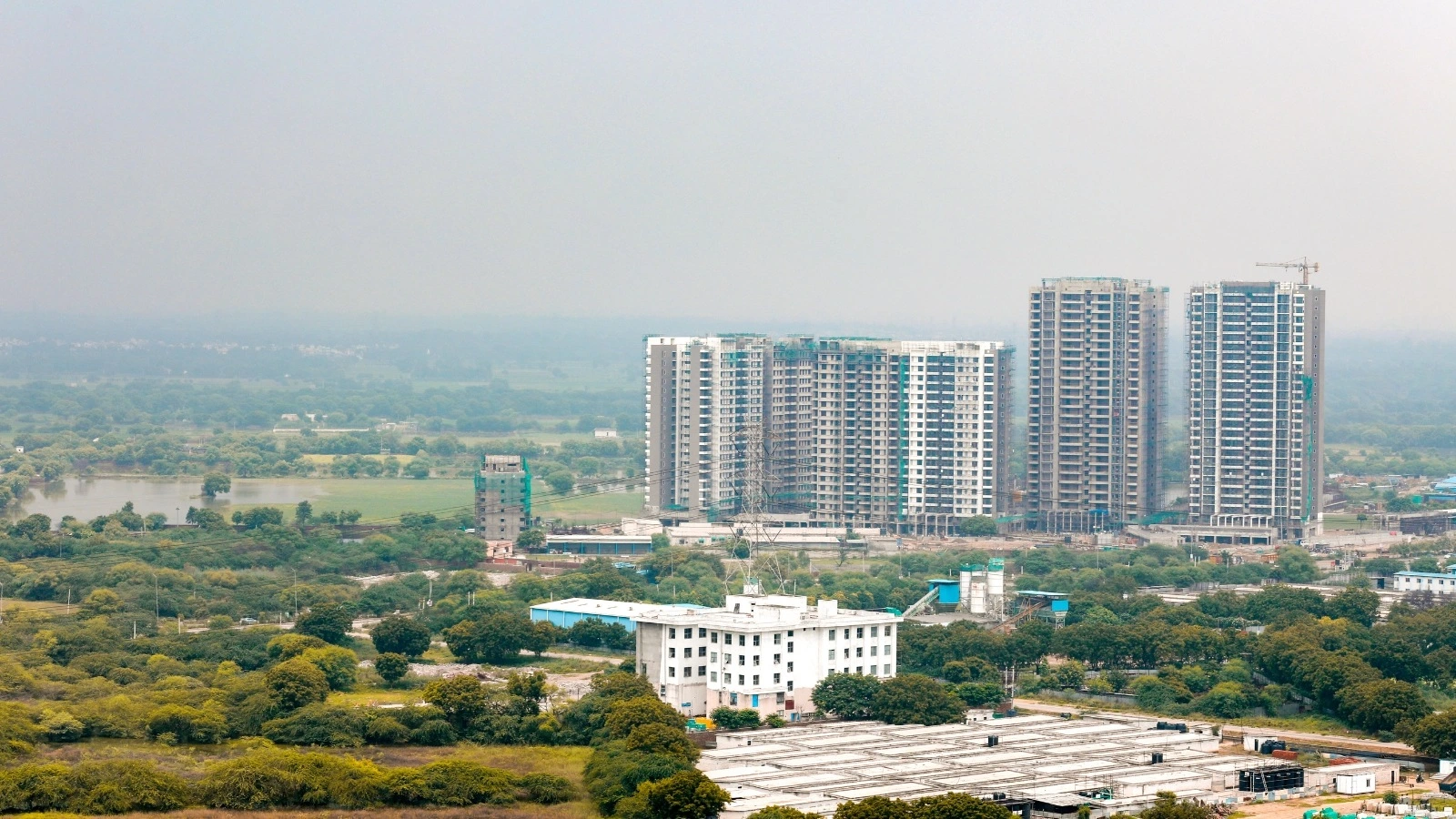Table of Content
- What is Bhumi Pujan?
- Bhumi Pujan vs. Foundation Stone Laying
- Benefits of Performing Bhumi Pujan
- Best Months for House Construction in 2026
- Bhumi Pujan Muhurat Dates for 2026
- Regional Variations in Bhumi Pujan
- Who Should Perform Bhumi Pujan?
- Modern Trends in Bhumi Pujan
- Step-by-Step Bhumi Pujan Ritual (Vidhi)
- Samagri (Materials) Needed
- Mistakes to Avoid During Bhumi Pujan
- Vastu Considerations
- Remedies if Bhumi Pujan is Missed
- Best Time for Construction Work
- Conclusion
Building a new home is one of the most exciting milestones in life. But in India, constructing a house is more than just bricks and mortar, it’s a spiritual journey. Before laying the foundation, performing a Bhumi Pujan is considered essential in Hindu tradition. This sacred ritual not only invokes divine blessings but also ensures that your home is filled with positivity, prosperity, and harmony.
If you’re planning to start construction in 2026, knowing the Bhumi pujan muhurat is crucial. In this article, I’ll guide you through the dates, timings, rituals, and practical tips to make your house construction journey smooth and auspicious.
What is Bhumi Pujan?
Bhumi Pujan, also known as Bhoomi Puja, is an ancient Hindu ritual performed before starting construction on a plot of land. The ceremony is a way of worshiping Mother Earth (Prithvi), seeking her forgiveness for disturbing her soil, and requesting blessings for a prosperous life.
During the ritual, offerings are made to Lord Ganesha, Vastu Purusha, Dikpalas (directional guardians), and the five elements earth, water, fire, air, and space. The purpose is to remove obstacles, invite positive energy, and create a strong spiritual foundation for your home.
Performing Bhumi Pujan is not just about tradition; it is believed that homes built after proper rituals flourish in terms of health, wealth, and happiness.
Also Read: Griha Pravesh Muhurat in 2026: Best Dates, Timings, and Tips
Bhumi Pujan vs. Foundation Stone Laying
Many people confuse Bhumi Pujan with the foundation stone-laying ceremony (Shilanyas). While Bhumi Pujan focuses on worshipping the land and seeking divine blessings, Shilanyas marks the actual physical start of construction.
In Vastu Shastra, the direction and placement of the foundation stone are vital. Ideally, the ceremony should be performed in the presence of family members, priests, and architects to ensure harmony between spiritual and practical aspects.
Benefits of Performing Bhumi Pujan
Performing Bhumi Pujan before construction brings several benefits:
- Positive Energy: Creates a harmonious atmosphere in the home.
- Divine Blessings: Pleases Mother Earth and deities to safeguard the property.
- Removes Obstacles: Ensures smooth construction and prevents unexpected hurdles.
- Spiritual Significance: Honors the five elements and ancestors, promoting well-being.
- Agricultural Benefit: If constructing on farmland, the ritual enhances fertility and productivity.
Best Months for House Construction in 2026
According to Hindu tradition and Vastu Shastra, certain months are more favorable for starting construction:
- Vaisakha (April-May): Wealth and prosperity.
- Phalguna (March-April): Health and wellness.
- Maagh (January-February): Success and achievement.
- Margashirsha (Nov-Dec), Pausha (Dec-Jan), Bhadrapada (Aug-Sep), Kartik (Oct-Nov): Highly auspicious for construction activities.
It’s generally recommended to avoid starting construction during Ashada to Kartik Shukla, as these months are considered inauspicious for new beginnings.
Bhumi Pujan Muhurat Dates for 2026
Here are the ideal Bhumi pujan muhurat dates for 2025-26. These dates are chosen based on tithis, nakshatras, and planetary positions to ensure maximum auspiciousness:
Bhumi Pujan Muhurat in February 2026
|
Date |
Day |
Muhurat Timing |
|
February 21 |
Saturday |
1:01 PM – 6:19 PM |
Bhumi Pujan Muhurat in April 2026
|
Date |
Day |
Muhurat Timing |
|
April 20 |
Monday |
5:51 AM – 7:28 AM |
|
April 26 |
Friday |
8:01 AM – 7:22 PM |
Bhumi Pujan Muhurat in August 2026
|
Date |
Day |
Muhurat Timing |
|
August 19 |
Wednesday |
5:52 AM – 6:47 AM |
|
August 20 |
Thursday |
10:49 AM – 9:19 PM |
|
August 28 |
Thursday |
2:15 PM – 5:57 AM (next day) |
|
August 29 |
Friday |
5:57 AM – 9:48 AM |
Bhumi Pujan Muhurat in September 2026
|
Date |
Day |
Muhurat Timing |
|
September 12 |
Saturday |
1:43 PM – 6:05 AM (next day) |
|
September 14 |
Monday |
6:06 AM – 7:07 AM |
Bhumi Pujan Muhurat in October 2026
|
Date |
Day |
Muhurat Timing |
|
October 30 |
Friday |
6:32 AM – 9:04 AM |
Bhumi Pujan Muhurat in November 2026
|
Date |
Day |
Muhurat Timing |
|
November 1 |
Sunday |
5:40 AM – 6:33 AM |
|
November 5 |
Wednesday |
3:30 PM – 6:26 PM |
|
November 14 |
Sunday |
8:24 PM – 6:22 AM (next day) |
|
November 21 |
Sunday |
6:51 AM – 2:31 PM |
|
November 25 |
Wednesday |
6:52 AM – 6:53 AM |
|
November 26 |
Thursday |
6:53 AM – 5:47 PM |
Bhumi Pujan Muhurat in December 2026
|
Date |
Day |
Muhurat Timing |
|
December 2 |
Wednesday |
8:52 PM – 6:58 AM (next day) |
|
December 3 |
Thursday |
6:58 AM – 9:24 AM |
|
December 4 |
Friday |
10:23 AM – 7:00 AM (next day) |
|
December 5 |
Saturday |
7:00 AM – 7:00 AM (next day) |
|
December 12 |
Friday |
7:04 AM – 10:14 AM |
Regional Variations in Bhumi Pujan
The ritual may differ slightly across regions:
- South India: Includes worship of Ayyanar or Vasthu Naal.
- West India: Pit filled with milk, honey, and sacred items.
- North India: Copper plate with mantras and grains.
- East India: Snake goddess Manasa worship may be included.
Despite regional differences, the core principle of seeking blessings from Mother Earth remains the same.
Also Read: How to Use Vastu Chakra for Your Home to Bring Harmony and Positive Energy
Who Should Perform Bhumi Pujan?
Traditionally, the head of the family performs Bhumi Pujan with immediate family members present. A priest is usually invited to chant mantras. Women’s participation is highly recommended as it adds positive energy. For large projects, architects and Vastu experts can also play a role in ensuring proper alignment.
Modern Trends in Bhumi Pujan
Even in contemporary times, Bhumi Pujan remains relevant. Modern trends include:
- Online Bhumi Pujan: Virtual priests conduct rituals for distant plots.
- Eco-Friendly Practices: Use of organic offerings and natural materials.
- Digital Documentation: Videos and photographs for memory and record-keeping.
These adaptations make it easier for urban homeowners to follow tradition while maintaining convenience.
Step-by-Step Bhumi Pujan Ritual (Vidhi)
- Spot Identification: Select the exact plot location.
- Digging and Preparation: Clean the site and prepare a pit.
- Idol Placement: Install Ganesha, Vastu Purusha, and other deity idols.
- Offerings: Include grains, fruits, Panchdhatu, and water.
- Kalash Puja and Mantras: Invoke blessings for prosperity.
- Snake God Worship: Respect living beings in the soil.
- Closing Rituals: Circumambulation and sprinkling holy water.
Samagri (Materials) Needed
- Kalash with water and coconut
- Idols of Ganesh and Vastu Purusha
- Grains, fruits, flowers
- Panchdhatu (five metals) items
- Holy water, turmeric, kumkum, incense sticks
Mistakes to Avoid During Bhumi Pujan
- Ignoring the muhurat
- Skipping Vastu recommendations
- Using poor-quality puja materials
- Missing essential steps in the ritual
- Not preparing the site properly
Vastu Considerations
- Plot facing north, east, or northeast is ideal.
- Ensure proper slope and drainage.
- Correct placement of the foundation stone according to Vastu.
- Avoid building near cemeteries, ponds, or temples in conflicting directions.
Remedies if Bhumi Pujan is Missed
If Bhumi Pujan is missed, performing Vastu Shanti Puja or ancestral worship is recommended. These rituals help neutralize negative energy and invite prosperity even after construction has begun.
Best Time for Construction Work
- Post-Monsoon (Sept–Mar): Ideal for structural work.
- Winter: Dry weather helps cement curing.
- Summer: Longer daylight hours are useful for interior work.
- Spring: Good for finishing and landscaping.
Conclusion
Performing Bhumi Pujan is not just a ritual it is a way to honor the land, invite divine blessings, and create a home filled with positivity. Choosing the right Bhumi pujan muhurat ensures your construction starts on an auspicious note, blending spiritual and practical benefits.
Before starting your dream home, consult a local priest or Vastu expert, plan according to the muhurat, and embrace this beautiful tradition for a prosperous and harmonious future.











Ans 1. Bhumi Pujan, also called Bhoomi Puja, is a Hindu ritual performed before starting construction to worship Mother Earth, seek her blessings, and ensure a prosperous and harmonious home.
Ans 2. It removes obstacles, invites positive energy, pleases deities, and ensures smooth construction while promoting spiritual well-being.
Ans 3. No. Bhumi Pujan is a spiritual ceremony to bless the land, while Shilanyas marks the actual physical start of construction.
Ans 4. Auspicious months include Vaisakha (April-May), Phalguna (March-April), Maagh (January-February), and others like Margashirsha, Pausha, Bhadrapada, and Kartik. Specific muhurat dates are provided for February, April, August, September, October, November, and December 2026.
Ans 5. Traditionally, the head of the family performs the puja with immediate family members, a priest, and optionally architects or Vastu experts. Women’s participation is encouraged for positive energy.
Ans 6. Kalash with water and coconut, idols of Ganesh and Vastu Purusha, grains, fruits, flowers, Panchdhatu items, turmeric, kumkum, holy water, and incense sticks.
Ans 7. Ignoring the muhurat, skipping Vastu guidelines, using poor-quality materials, missing essential ritual steps, and not preparing the site properly.
Ans 8. Performing Vastu Shanti Puja or ancestral worship is recommended to neutralize negative energy and invite prosperity even after construction has started.
Ans 9. Yes. South India may include Ayyanar worship, West India uses pits with milk and honey, North India uses copper plates with mantras, and East India may involve Snake Goddess Manasa worship.
Ans 10. Post-monsoon (September–March) is ideal for structural work, winter aids cement curing, summer offers longer daylight for interior work, and spring is good for finishing and landscaping.